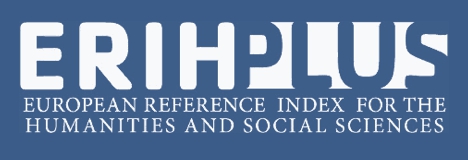CHARACTERIZATION OF THE BURNING REGIME OF THE TERRA RONCA STATE PARK, GOIÁS
Abstract
Although it brings together most of the burned areas in Brazil, the Cerrado still lacks detailed information about the fire regime in some localities in its territory. Aiming to contribute to meeting this demand, this study aimed to characterize, for the period between 1984 and 2020, the burning regime in the Terra Ronca State Park (PETeR), located in the state of Goiás. From the interpretation of Landsat satellite images, fire scars were identified in all the years analyzed. Neither large fire was observed nor a clear relationship with the Park's creation, demarcation or land tenure history. Regarding frequency, two regions were discriminated, both presenting low recurrence of burning. The regime identified in the PETeR suggests the maintenance of vegetation in the Park and, thus, the fulfillment of the basic objective of this category of UC.
References
BEATTY, R. Áreas protegidas do Cerrado brasileiro. Manejo integrado do fogo - situação, estratégia e recomendações. 321Fire. 2013.
BOND, W. J.; MIDGLEY, J. J. Kill thy neighbour: an individualistic argument for the evolution of flammability. Oikos, v. 73, n. 1, p. 79-85, 1995.
BOND, W. J.; WOODWARD, F. I.; MIDGLEY, G. F. The global distribution of ecosystems in a world without fire. New Phytologist, v. 165, n. 2, p. 525-538, 2005.
BOWMAN, D. M. J. S.; MURPHY, B. P. Fire and biodiversity. In: SODHI, N. S.; EHRLICH (Edits.) Conservation Biology for all. Oxford University Press, 2010. p. 163-180.
BRASIL. Lei nº 9.605, de 12 de fevereiro de 1998. Dispõe sobre as sanções penais e administrativas derivadas de condutas e atividades lesivas ao meio ambiente, e dá outras providências. Disponível em:
BRASIL. Lei nº 12.651, de 25 de maio de 2012. Dispõe sobre a proteção da vegetação nativa; altera as Leis nos 6.938, de 31 de agosto de 1981, 9.393, de 19 de dezembro de 1996, e 11.428, de 22 de dezembro de 2006; revoga as Leis nos 4.771, de 15 de setembro de 1965, e 7.754, de 14 de abril de 1989, e a Medida Provisória no 2.166-67, de 24 de agosto de 2001; e dá outras providências. Disponível em:
COUTINHO, L. M. Fire in the Ecology of the Brazilian Cerrado. In: GOLDAMMER J. G. (Ed.) Fire in the Tropical Biota. Ecological Studies (Analysis and Synthesis), v. 84. Berlin, Heidelberg: Springer, 1990. p. 82-105. https://doi.org/10.1007/978-3-642-75395-4_6
DALDEGAN, G. A.; CARVALHO JÚNIOR, O. A.; GUIMARÃES, R. F.; GOMES, R. A. T.; RIBEIRO, F. F.; MCMANUS, C. Spatial Patterns of Fire Recurrence Using Remote Sensing and GIS in the Brazilian Savanna: Serra do Tombador Nature Reserve, Brazil. Remote Sensing, v. 6, p. 9873-9894, 2014.
DANTAS, V. L.; BATALHA, M. A.; PAUSAS, J. G. Fire drives functional thresholds on the savanna-forest transition. Ecology, v. 94, n. 11, p. 2454-2463, 2013.
DOUGLAS, M. M.; SETTERFIELD, S. A.; MCGUINNESS, K.; LAKE, P. S. The impact of fire on riparian vegetation in Australia’s tropical savanna. Freshwater Science, v. 34, n. 4, 1351-1365, 2015.
FAGUNDES, G. M. Fazer o fogo fazer: Manipulações e agenciamentos técnicos na conservação do Jalapão (TO). Equatorial, v. 6, n. 10, p. 16-49, jan./jun. 2019.
FRANÇA, H.; RAMOS NETO, M. B.; SETZER, A. O Fogo no Parque Nacional das Emas. Ministério do Meio Ambiente (Série Biodiversidade, v. 27), 2007.
FURLEY, P. A. The nature and diversity of neotropical savanna vegetation with particular reference to the Brazilian cerrados. Global Ecology and Biogeography, v. 8, n. 3‐4, p. 223-241, 1999.
FURLEY, P. A.; REES, R. M.; RYAN, C. M.; SAIZ, G. Savanna burning and the assessment of long-term fire experiments with particular reference to Zimbabwe. Progress in Physical Geography, v. 32, n. 6, p. 611-634, 2008.
GOIÁS (Estado). Lei nº 10.879, de 07 de julho de 1989. Cria o Parque Estadual de Terra Ronca. Disponível em:
GOIÁS (Estado). Secretaria de Estado de Meio Ambiente e Desenvolvimento Sustentável. Regularização Fundiária. 2018. Disponível em:
GOIÁS (Estado). Secretaria de Estado de Meio Ambiente e Desenvolvimento Sustentável. Parque Estadual de Terra Ronca - PETeR. 2021. Disponível em:
HENRIQUES, R. P. B. Influência da história, solo e fogo na distribuição e dinâmica das fitofisionomias no bioma do Cerrado. In: SCARIOT, A.; SOUSA-SILVA, J. C.; FELFILI, J. M. (Eds.), Cerrado: Ecologia, Biodiversidade e Conservação. Ministério do Meio Ambiente, Brasilia, 2005. p. 73-92.
KEELEY, J. E.; PAUSAS, J. G.; RUNDEL, P. W.; BOND, W. J.; BRADSTOCK, R. A. Fire as an evolutionary pressure shaping plant traits. Trends in plant science, v. 16, n. 8, p. 406-411, 2011.
LENTILE, L. B.; HOLDEN, Z. A.; SMITH, A. M. S.; FALKOWSKI, M. J.; HUDAK, A. T.; MORGAN, P.; LEWIS, S. A.; GESSLER, P. E.; BENSON, N. C. Remote sensing techniques to assess active fire characteristics and post-fire effects. International Journal of Wildland Fire, v. 15, n. 3, p. 319-345, 2006.
MATOS, R. M. P.; AGUIAR, L. L. L.; MARTINS, P. T. A. Ocorrência de fogo no Parque Nacional da Chapada dos Veadeiros, Goiás, Brasil: histórico recente no contexto da sua ampliação. GeoTextos, v. 16, n. 2, p. 151-171, 2020.
MEDEIROS, M. B.; FIEDLER, N. C. Incêndios Florestais no Parque Nacional da Serra da Canastra: desafios para a conservação da biodiversidade. Ciência Florestal, Santa Maria, v. 14, n. 2, p. 157-168, 2004.
MORGAN, P.; HARDY, C. C.; SWETNAM, T. W.; ROLLINS, M. G.; LONG, D. G. Mapping fire regimes across time and space: understanding coarse and fine-scale fire patterns. International Journal of Wildland Fire, v. 10, p. 329-342, 2001.
MYERS, J. G. Savannah and forest vegetation of the interior Guiana plateau. Journal of Ecology, v. 24, p. 162-84, 1936.
NASCIMENTO NETO, W.; ANDRADE, S. M. A.; MIRANDA, H. S. The dynamics of the herbaceous layer following prescribed burning: a four year study in the Brazilian savanna. In: International Conference On Forest Fire Research, 3., 1988, Coimbra, Portugal. Proceedings... 1998. p. 1785-1792.
PAULINO, B. G.; MARTINS, P. T. A. Análise temporal da ocorrência de incêndios florestais no Parque Estadual da Serra de Caldas Novas (PESCaN), Goiás. Revista Brasileira de Geografia Física, v. 9, n. 5, p. 1465-1485, 2016.
PIVELLO, V. R.; COUTINHO, L. M. Transfer of macronutrients to the atmosphere during experimental burnings in an open cerrado (brazilian savanna). Journal of Tropical Ecology, v. 8, p. 487-497, 1992.
PRUDENTE, T. D.; ROSA, R. Detecção de incêndios florestais no Parque Nacional da Chapada dos Veadeiros e área de entorno. Caminhos de Geografia, Uberlândia, v. 11, n. 35, p. 209-221, 2010.
RAMOS NETO, M. B.; PIVELLO V. R. Lightning fires in a Brazilian savana national park: Rethinking management strategies. Environmental Management, v. 26, p. 675- 684, 2000.
RESENDE, F. C.; CARDOZO, F. S.; PEREIRA, G. Análise Ambiental da Ocorrência das Queimadas na Porção Nordeste do Cerrado. Revista do Departamento de Geografia, v. 34, p. 31-42, 2017.
RODRIGUES, M. F.; ROCHA, F. E. C.; CORTE, J. L. D.; SALVIATI, M. E.; OLIVEIRA-FILHO, E. C. Aspectos motivacionais para o uso do fogo na agricultura no Distrito Federal e entorno. Planaltina, DF: Embrapa Cerrados, 2016.
SALGADO-LABOURIAU, M. L.; FERRAZ-VICENTINI, K. R. Fire in the Cerrado 32,000 years ago. Current research in the Pleistocene, v. 11, n. 1, p. 85-87, 1994.
SATO, M. N. Efeito a longo prazo de queimadas prescritas na estrutura da comunidade de lenhosas da vegetação do cerrado sensu stricto. 2003. 84 f., Tese (Doutorado em Ecologia) - Universidade de Brasília, Brasília, 2003.
SCHMIDT, I. B.; FONSECA, C. B.; FERREIRA, M. C.; SATO, M. N. Experiências Internacionais de Manejo Integrado do Fogo em Áreas Protegidas – Recomendações para Implementação de Manejo Integrado de Fogo no Cerrado. Biodiversidade Brasileira, v. 6, n. 2, p. 41-54, 2016.
SILVA, G. T. Fluxos de CO2em um campo sujo submetido à queimada prescrita. 1999. 64 f. Dissertação (Mestrado em Ecologia) - Universidade de Brasília, Brasília, 1999.
SIMON, M. F.; PENNINGTON, T. Evidence for adaptation to fire regimes in the tropical savannas of the Brazilian Cerrado. International Journal of Plant Sciences, v. 173, n. 6, p. 711-723, 2012.
SOUZA, S. C. (Coord.). Parque Estadual Terra Ronca. Plano de Manejo - Fase 1. Volume I e II. 2003. Disponível em: https://www.meioambiente.go.gov.br/files/2Plano_de_Manejo_peter_final.pdf. Acesso em: 21 out. 2021.
SOUZA JR., C. M.; et al. Reconstructing Three Decades of Land Use and Land Cover Changes in Brazilian Biomes with Landsat Archive and Earth Engine. Remote Sensing, v. 12, n. 17, 2020. DOI: 10.3390/rs12172735.
WHELAN, R. J. The ecology of fire. Cambridge university press, 1995.
ZHAN, X.; et al. Detection of land cover changes using MODIS 250 m data. Remote Sensing of Environment, v. 83, n. 1-2, p. 336-350, 2002.

This work is licensed under a Creative Commons Attribution-NonCommercial 4.0 International License.
Policy Proposal for Free Access Journals
Authors who publish in this journal agree to the following terms:
a. Authors retain the copyright and grant the journal the right of first publication, with the work simultaneously licensed under the Creative Commons Attribution License which allows the sharing of the work with acknowledgment of the authorship of the work and initial publication in this journal.
b. Authors are authorized to take additional contracts separately, for non-exclusive distribution of the version of the work published in this journal (eg publish in institutional repository or as a book chapter), with acknowledgment of authorship and initial publication in this journal.
c. Authors are allowed and encouraged to publish and distribute their work online (eg in institutional repositories or on their personal page) at any point before or during the editorial process, as this can generate productive changes, as well as increase the impact and The citation of published work (See The Effect of Free Access).





















